THE LIGHT WITHIN
The meaning and celebration of the Festival of Lights, widely known as Diwali, vary across South Asian diasporas living in the West. Through the echoes of migration, Diwali becomes a reminder of what was left behind, of celebration, and of family. At the same time, it serves as a unifying symbol of gathering. No matter where we are or where we go, this time of year carries a sense of reflection and belonging.
How it is celebrated depends on who you ask. In building a sense of identity in the lands we call home, Diwali can be seen in the clothing we choose to wear, the food we eat, and in practising or adapting long-standing family customs. Over generations, the festival takes on more personalised forms, bridging the new with tradition. That is the beauty of Diwali, it is nuanced, and we can bring to it what we need.
The Light Within explores these cues through fine art and documentary photography, Mughal-style painting, and embroidery, drawing on textures, textiles, colours, memories, and nostalgia that come together in a collective experience.
The artworks were selected to echo one another, on display, these will alternate between photograph and painting.
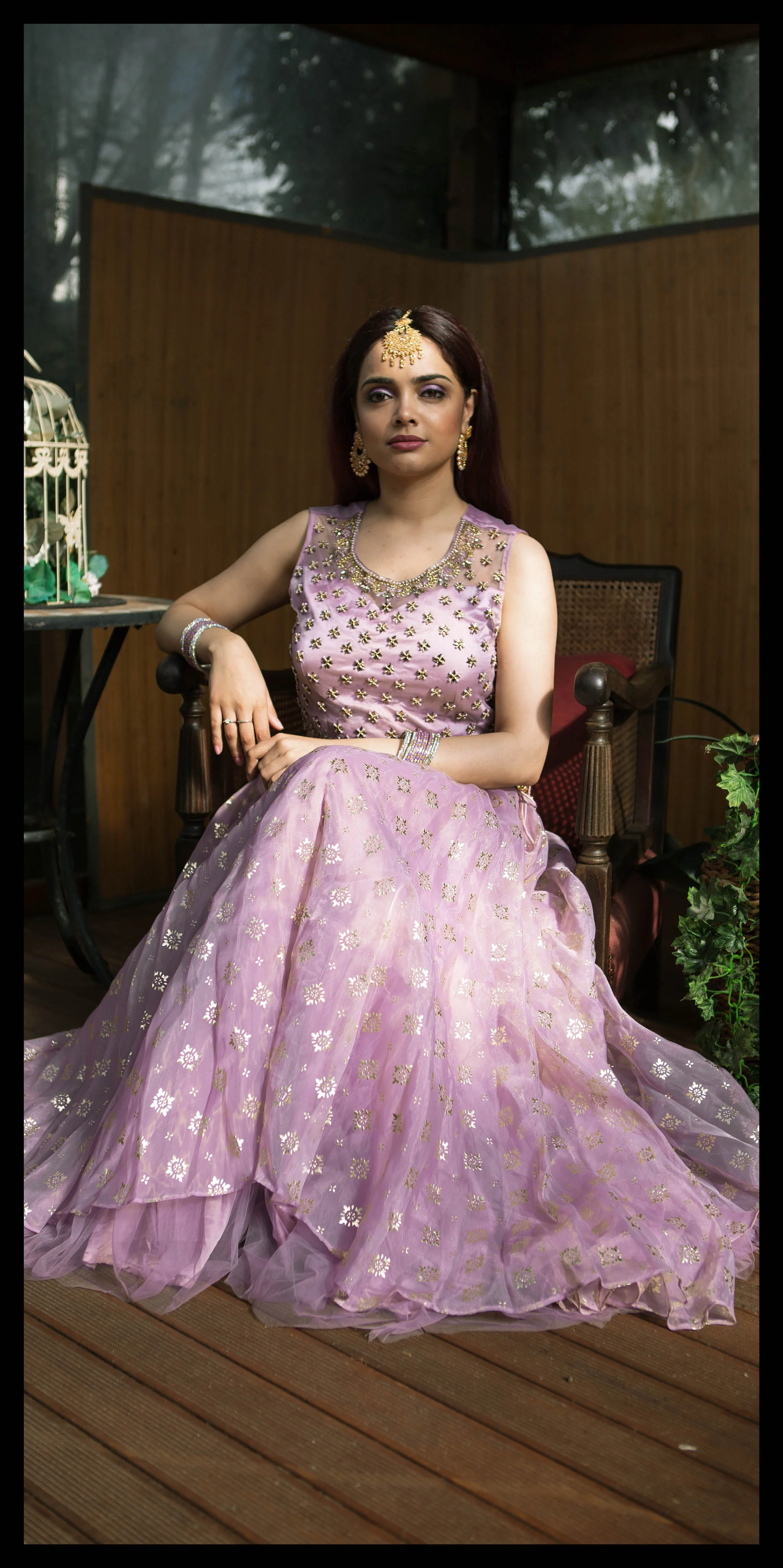
1.
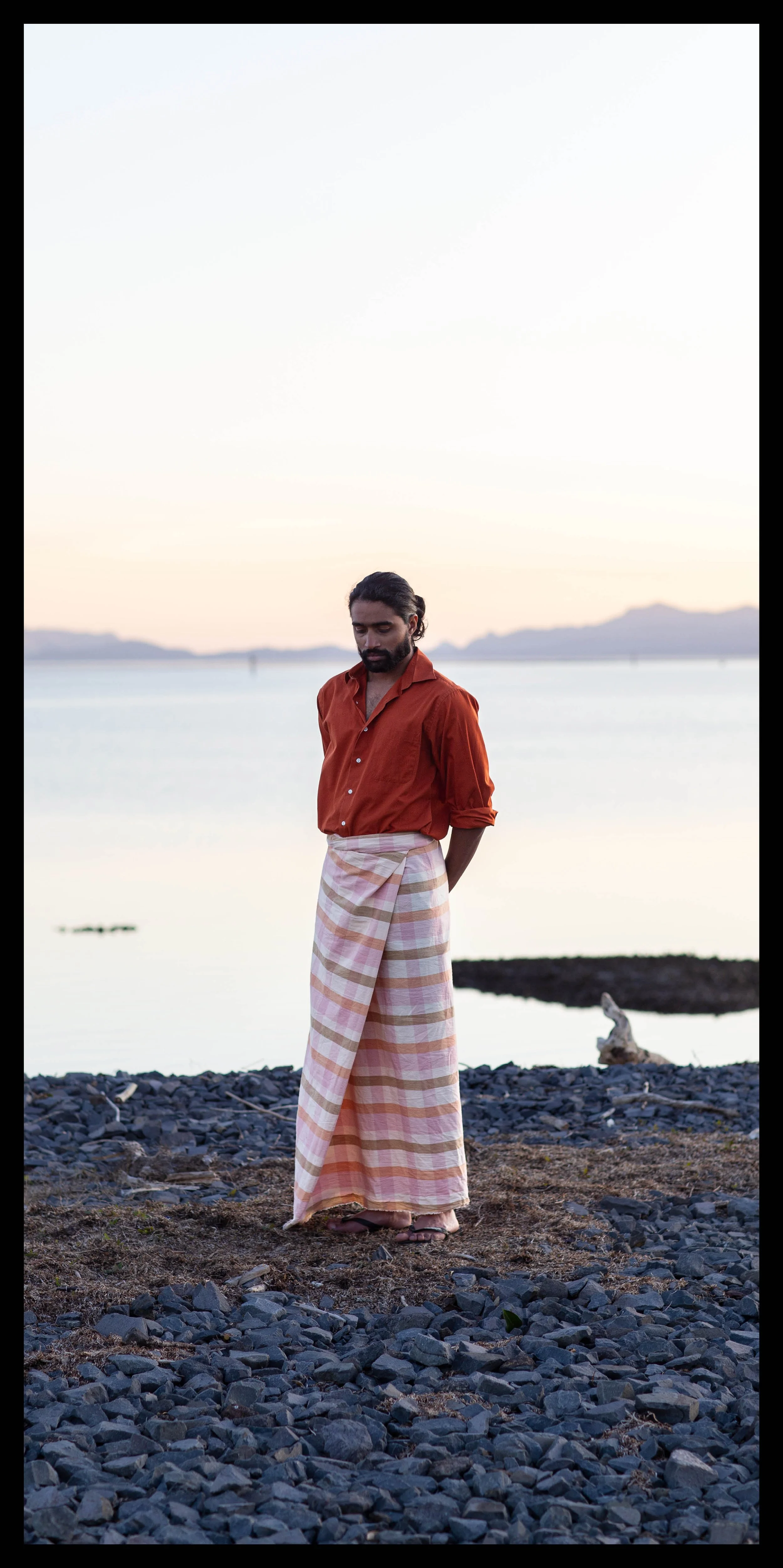
2.
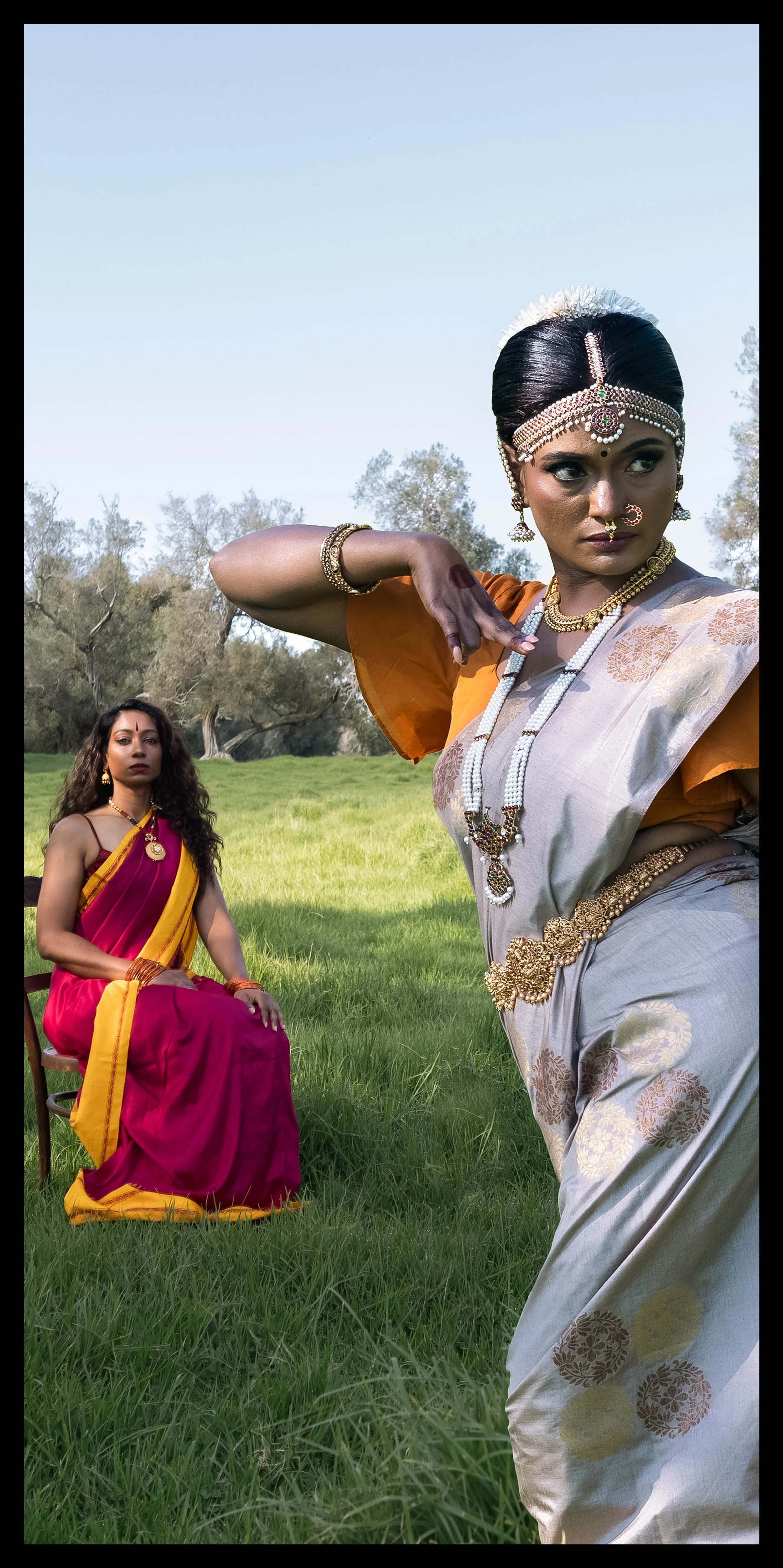
3.
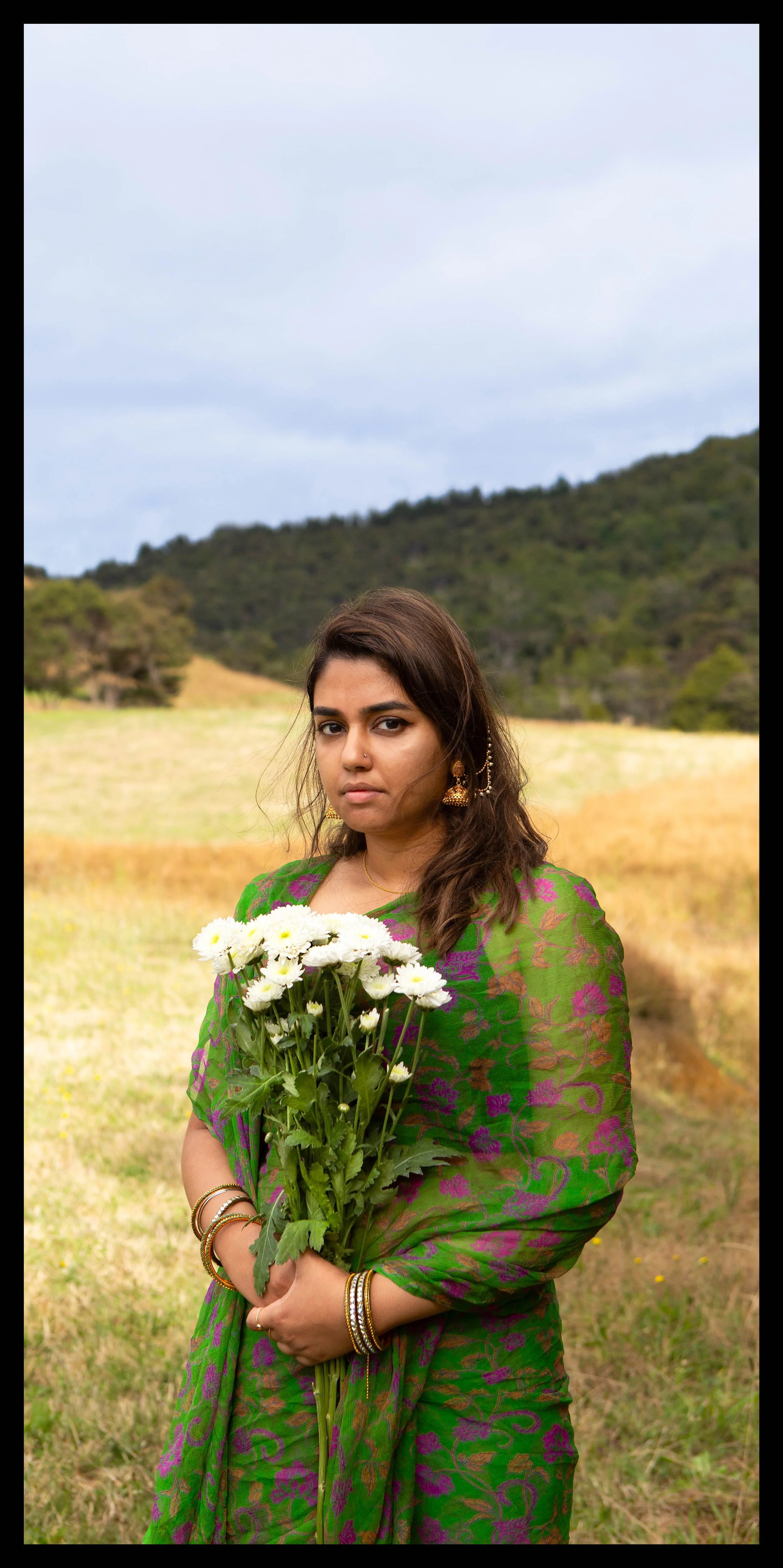
4.
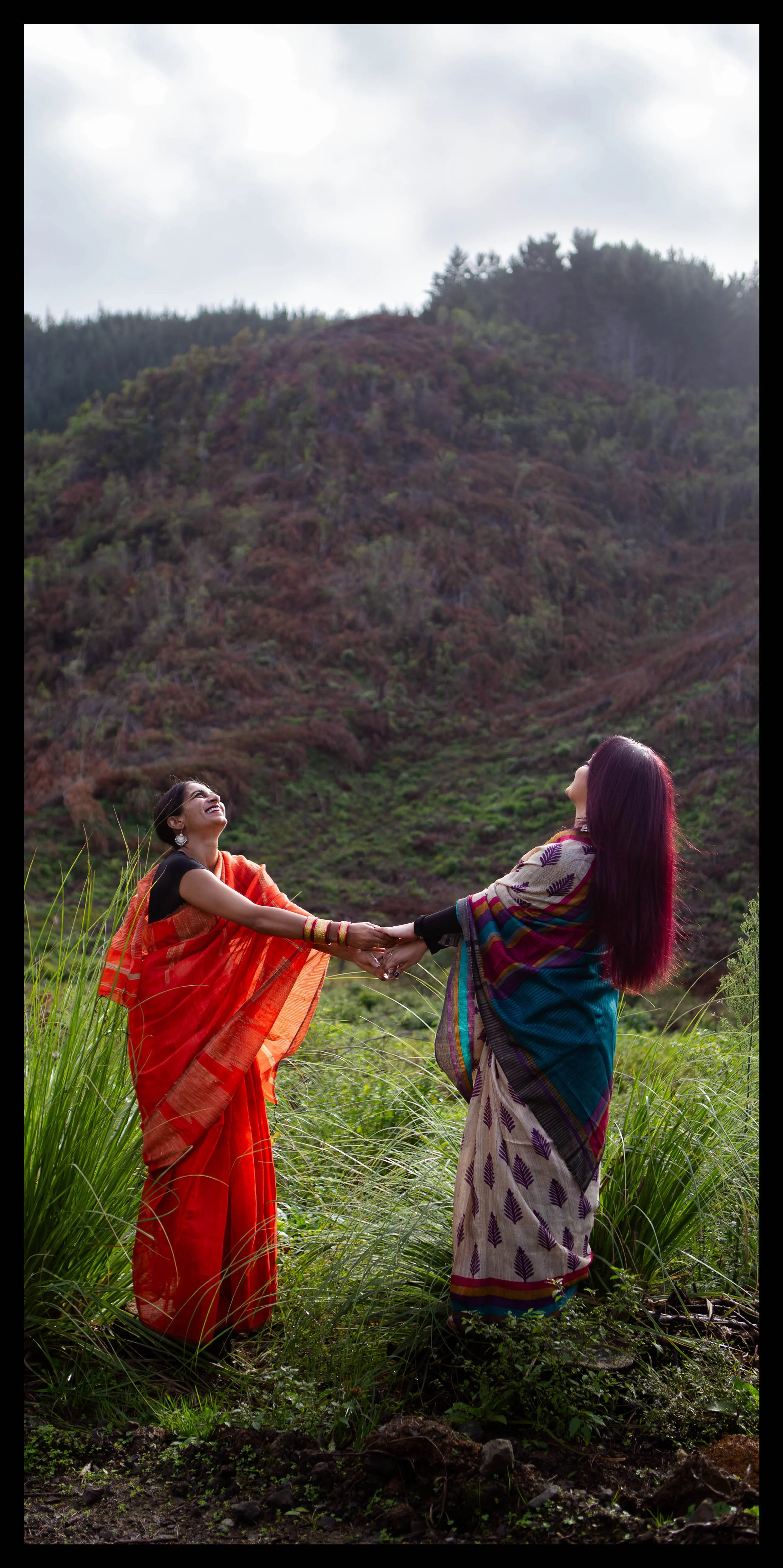
5.
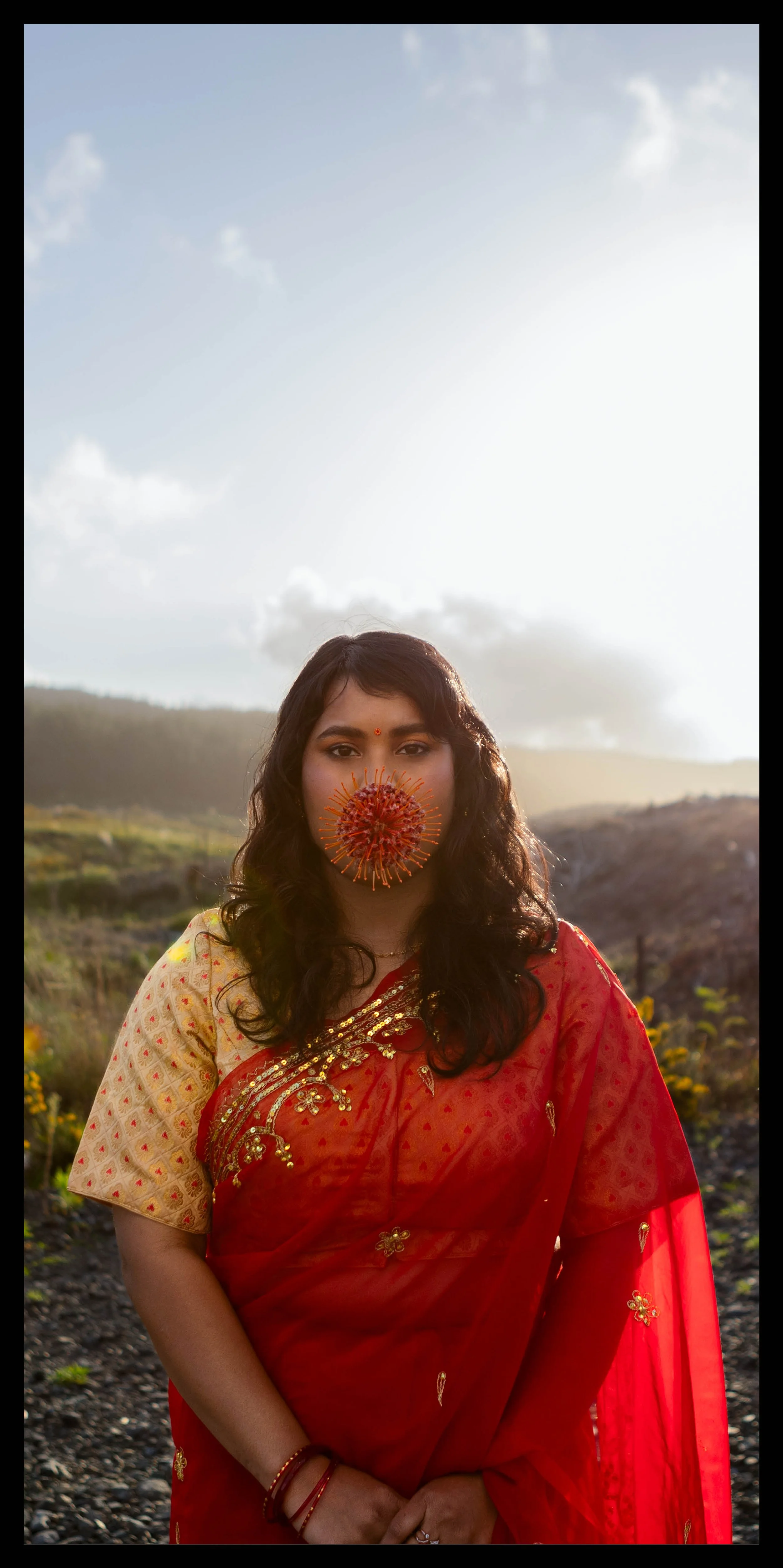
6.
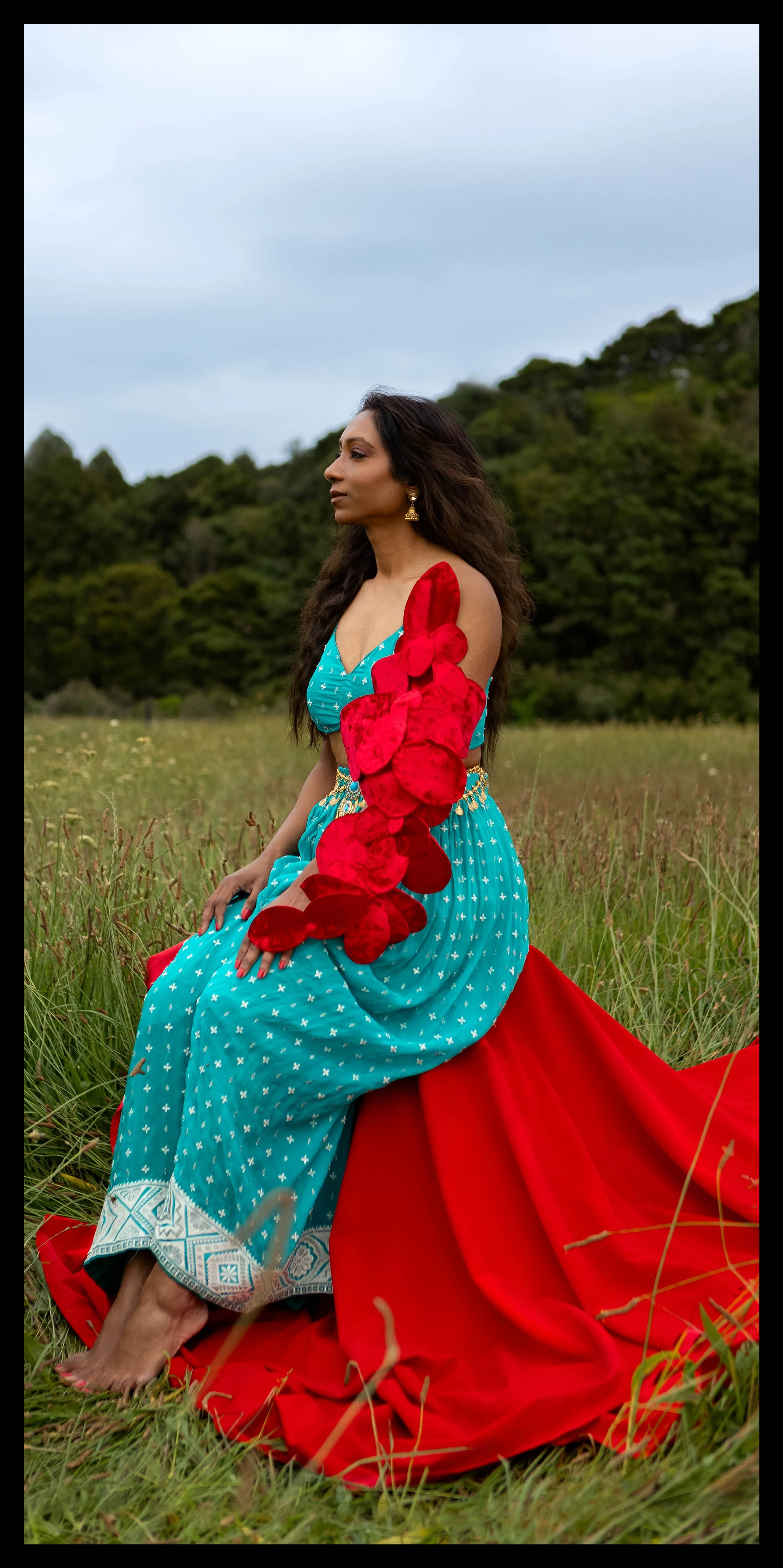
7.
Artworks by Abhi Chinniah
1. Sunaina, Light Skin Dark Skin, 2019
Photographed as part of Abhi Chinniah’s debut photo essay, Light Skin Dark Skin. An excerpt from Sunaina’s portrait statement written by her in 2019: ‘‘I was at a dance event once and a man approached me for a dance. While dancing, he asked me where I was from. I said India. He asked me which part and I said proudly, ‘South India’. ‘No way! If it wasn’t for your accent, I would think your Colombian!’
I put my guard up and stepped away. ‘No! I am South Indian’ I replied. He said, ‘you certainly don’t look it, you’re so fair’.
While this man may have thought he was giving me a compliment, I did not perceive it that way. I was gobsmacked at how oblivious he was to the fact that he had just passed a racist comment. Was I going to let someone question my identity?
I finally said, ‘I am South Indian, and proud of it too’ – with a big smile on my face. We finished the dance; I thanked the man and walked away. Despite initially feeling infuriated, I walked away from that dance feeling so empowered. I knew that from now on, this is what I had to do, I had to stand up for myself. I do want to make it clear that I wasn’t tormented from my experiences. My mental health didn’t suffer, life simply goes on. For this, I am grateful.’’
Portraits from No.13, years 2023 - 2024
Numbers 2, 3, 6 & 7
4. Jasmin, A Migrant’s Path, 2021
Jasmin was photographed for Light Skin Dark Skin, however would be exhibited under A Migrant’s Path from 2021. An excerpt from her portrait essay written by her in 2021:
’’Being from Malaysia although racism was part of the daily fabric of our existence it never really struck me as unfair or oppressive. It just seemed to be the way things were. I remember only realising that racism was ‘a thing’ in Malaysia when a white British teacher of mine in Year 8 pointed out that there was actually widespread racism in the country. She used the example of stores advertising for staff vacancies with the descriptor “Chinese only”, showing just how stark and overt racism in Malaysia is. I would later go on to learn that there were also deep levels of institutional racism in my home country that my family would talk about implicitly when I was young but never really explained its full reality.
Because it’s such a naturally embedded part of our culture as a child I don’t think I ever consciously registered how it permeated through every part of our culture. My parents, to this day, have experiences of being served after Chinese diners in restaurants they’ve gone to for years, by both Chinese and Indian Malaysian staff. We’ve internalised racism and its associated colourism in conscious and subconscious, implicit and explicit ways.
Unlike my understanding of racism, I don’t have a defining lightbulb moment where I thought “Oh this is a bad thing” or “I don’t want to be the colour I am”. I have many snippets of memories of colourist attitudes from family and friends around me that I don’t think have affected me very deeply on a conscious level, but I’m sure were internalised to some degree unconsciously.I remember a particular experience in school where this Chinese-Malaysian girl in my class in Year 3 refused to hold hands with me or any of the other Indian kids in class because she thought she would ‘catch’ our ‘dirty’ colour.
With my family I remember being told that I needed to wear more sunscreen because I was becoming “black” or on days where I had been out in the sun and my skin had tanned my parents would throw around the word “blackie”. Whenever I heard these sorts of comments coming from my family, and especially my parents I felt the sting of criticism but I mostly brushed off the comments by being the angry and irritable teenager I was and ignoring everything my family said. I’m not talking about these experiences to throw my family or parents under the bus. They are the products of the context, cultural background, and time they live in and I think at the moment we’re a lot more aware and willing to unpack the history and -- of this harm.
On my last trip back home, I also realised how many signs there were for whitening skin products produced by Dato’ Seri Dr. Hajah Vida along the highway. I don’t ever remember growing up and seeing these sorts of billboard signs of whitening skincare products. I know they existed on the shelves in beauty stores and pharmacies, à la the infamous fair and lovely, but it was never so publicly advertised as an ideal to aspire to. It was shocking and saddening to see almost every second sign on the highway an ad for skin lightening.’’
5. Gathering, A Migrant’s Path, 2021
Photographed in June 2021, between Covid-19 lockdowns, this portrait captures a fleeting moment of togetherness. Created during a time of distance and disconnection, the work reflects the artist’s search for intimacy and belonging. The image forms part of a triptych.
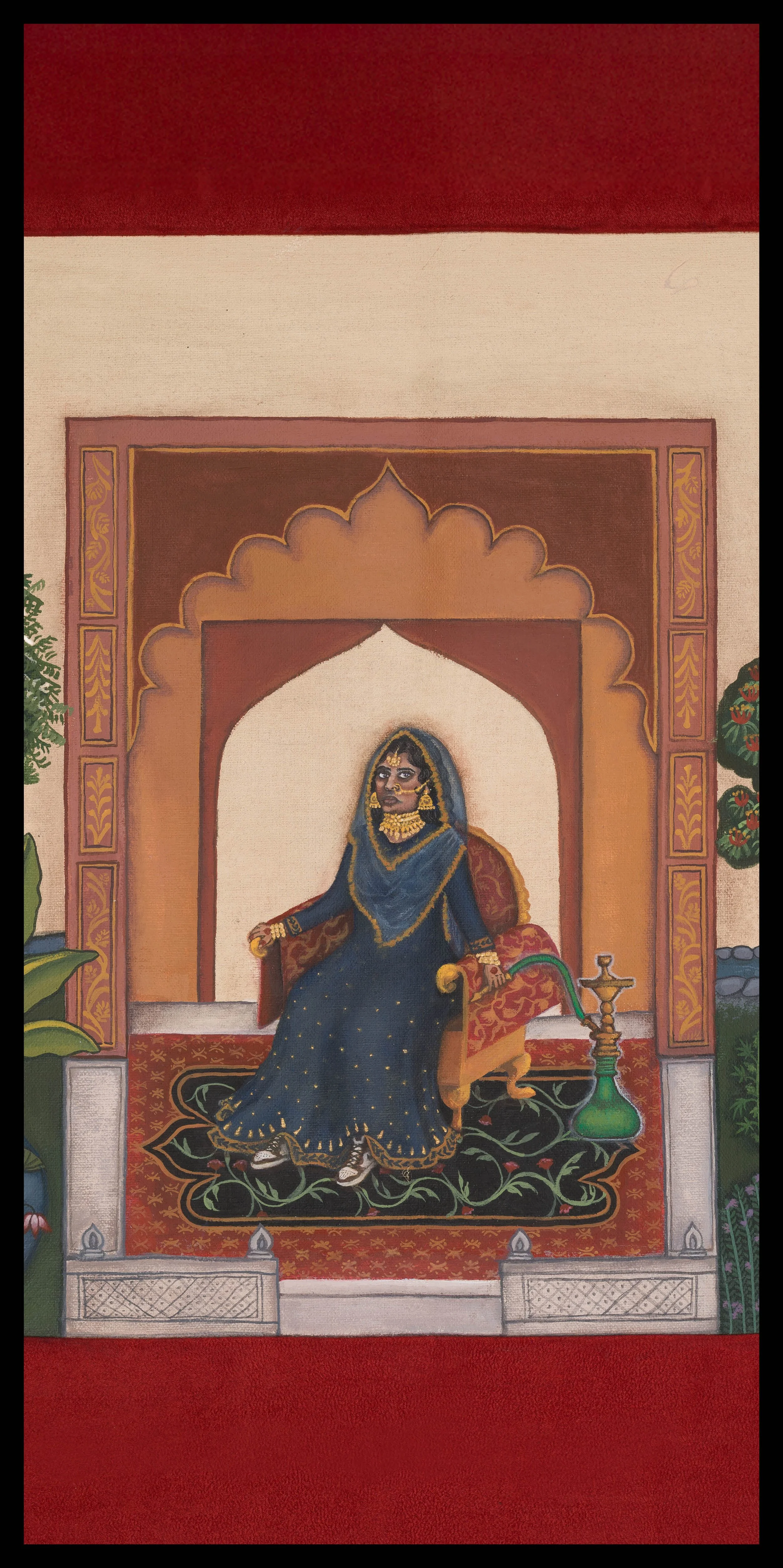
1.
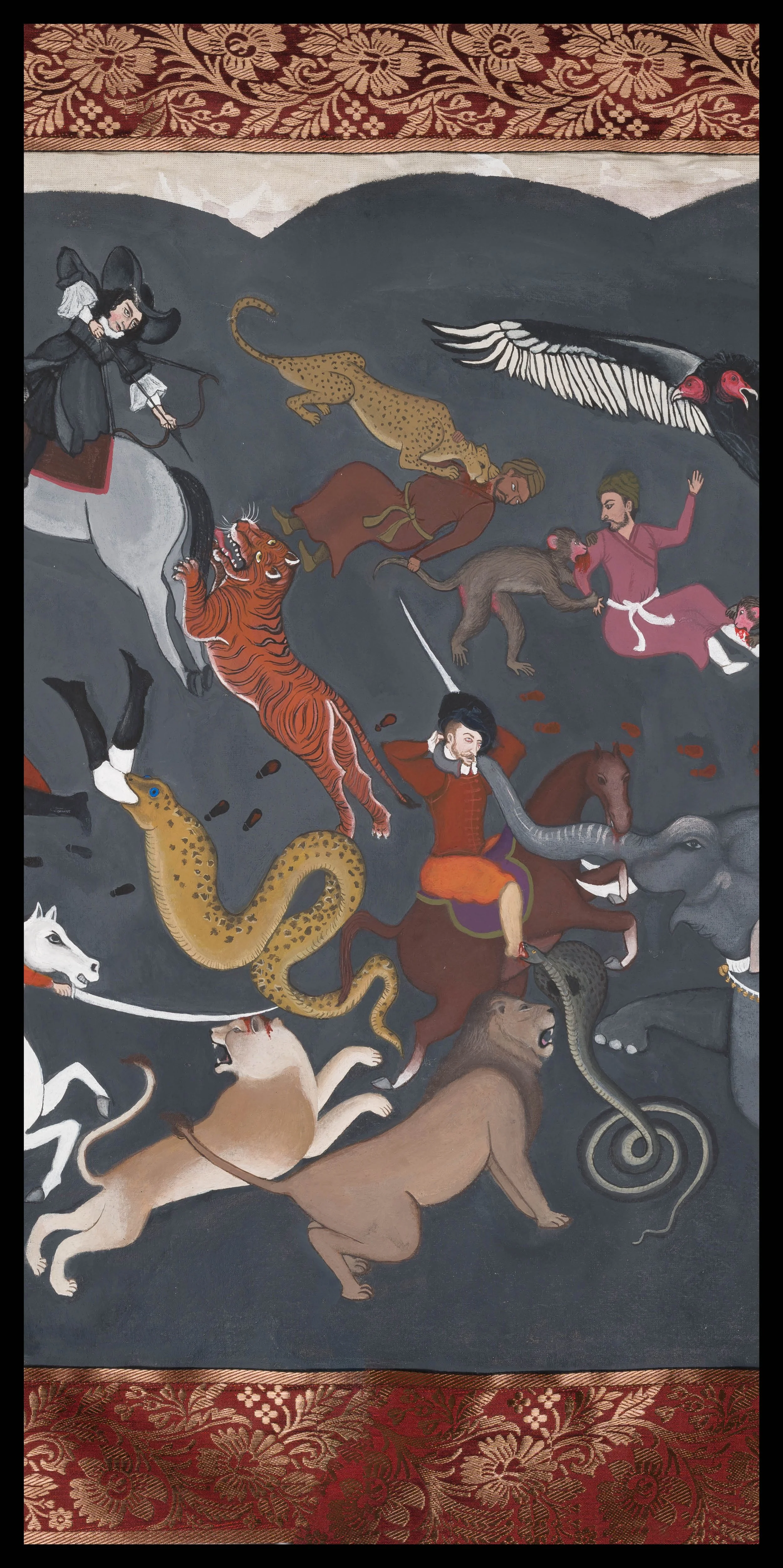
2.
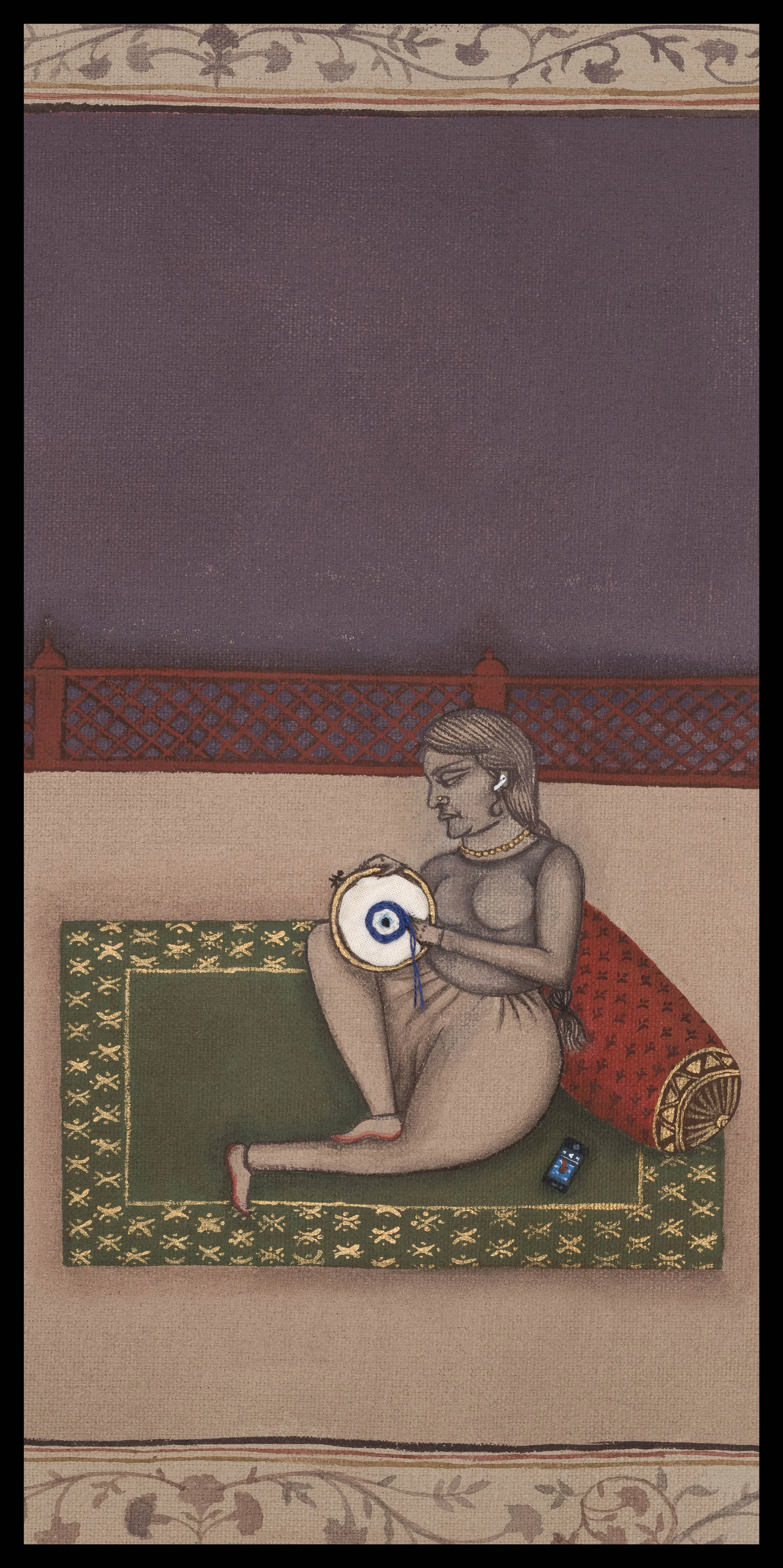
3.

4.
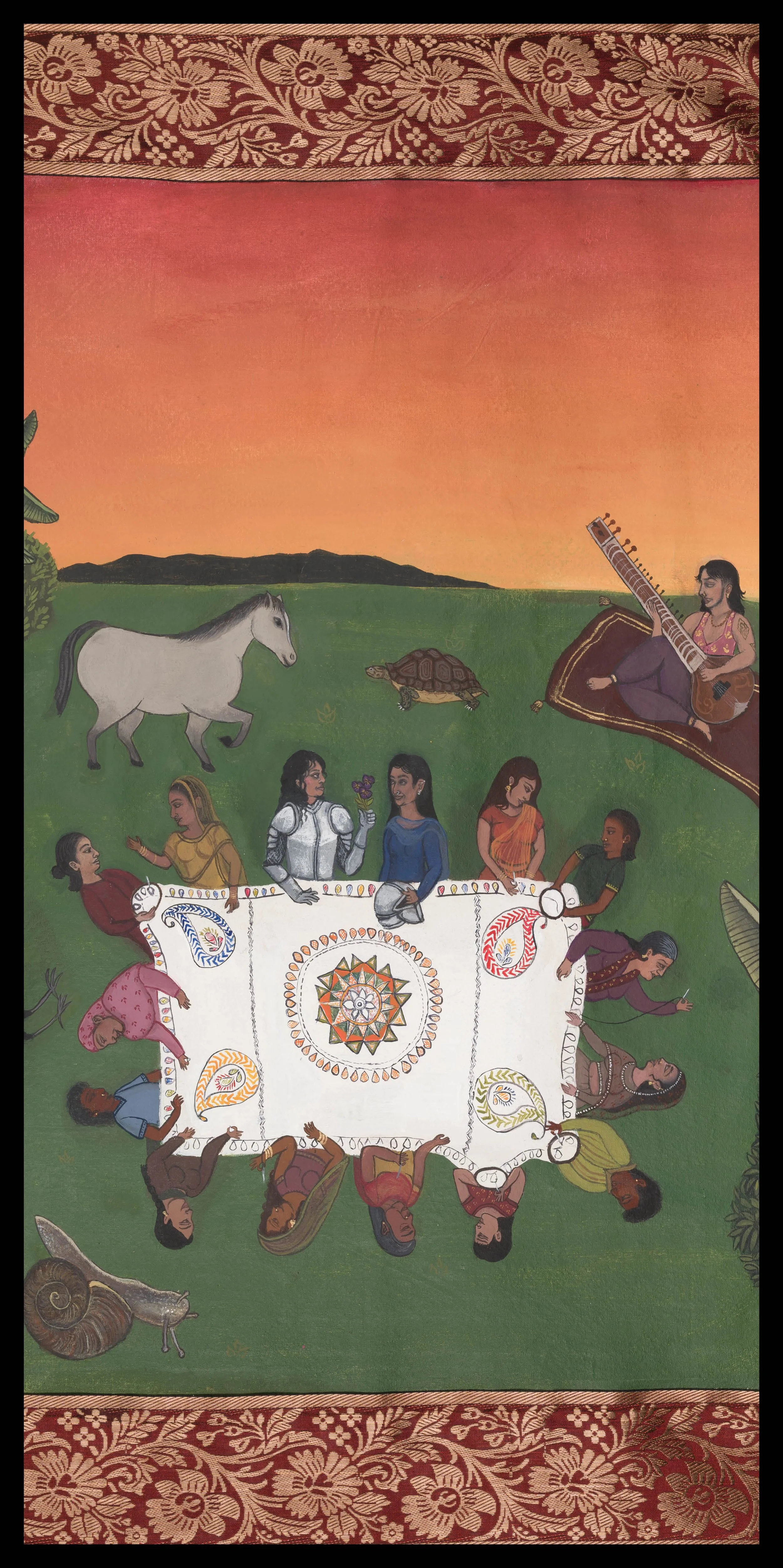
5.

6.
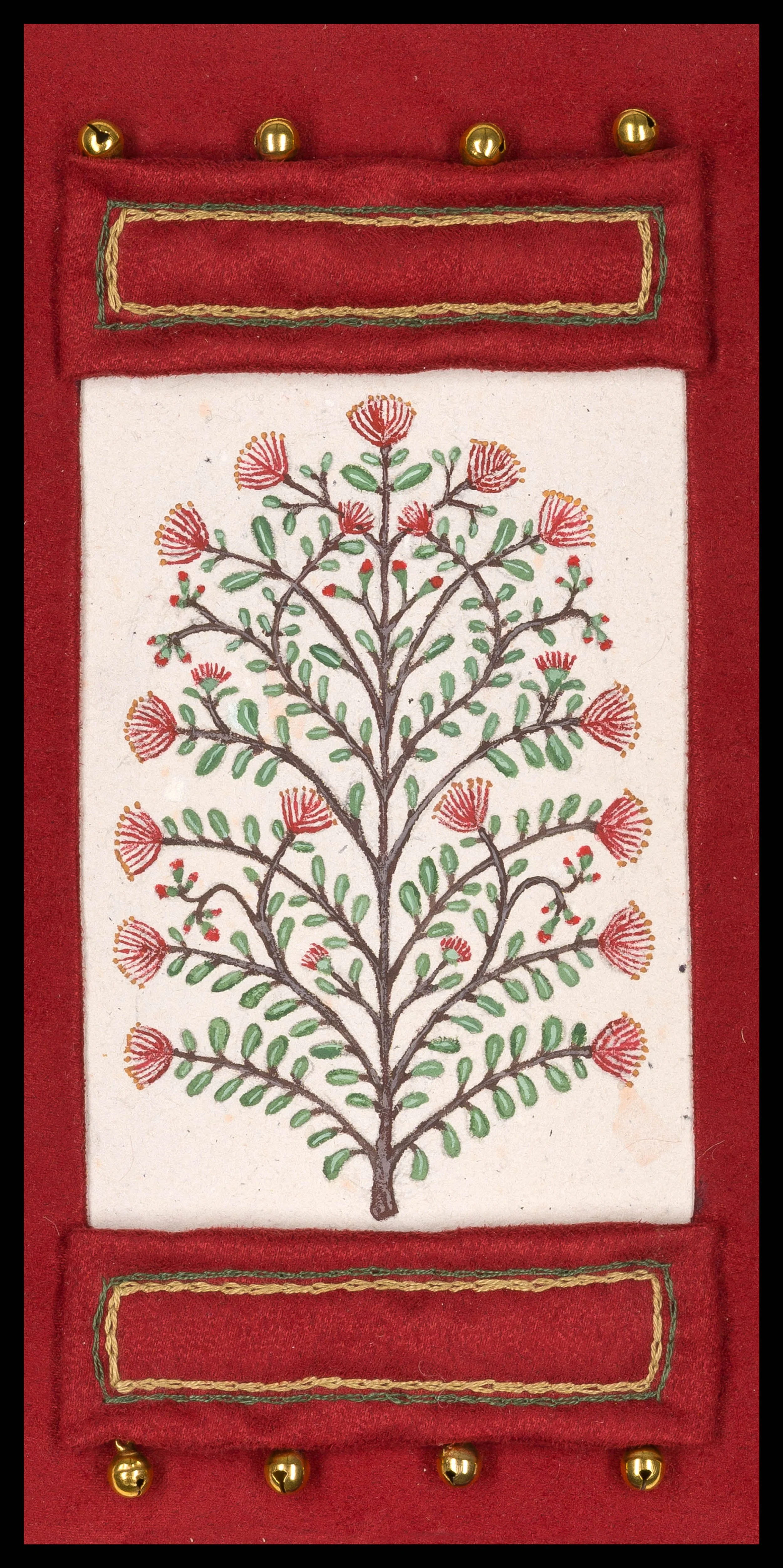
7.
Artworks by Sahana Rahman
1. Golden Phool (ফুল), Sahana Rahman, 2021.
Matte acrylics, cotton thread, cotton fabric, faux suede.
This painting acts as a timestamp in the journey of embracing my self-identity. Golden Phool is a play on words, referring to this golden era in my life where I’m starting to form deeper relationships with my cultural identity after years of hiding it. Phool (“ফুল” pronounced “fhool”, translates to flower in Bangla) represents the diverse choice of flora (from Aotearoa, Bangladesh & Sri Lanka) with the double meaning of being a fool. A fool for holding onto the past but choosing to embrace it into my identity. I place myself in the middle with a stern look on my face and shisha in hand, wondering how my identities can come together.
Katha O Maatram: Stories of Becoming, 2025.
Numbers 2, 5 & 6
Matte acrylics, cotton fabric, sari border.
This 3-metre-long painting is an unfolding narrative of my personal life reimagined through a surrealist approach to Mughal miniature style painting. The painting showcases heartbreak, love, homelessness, trauma, queerness and community. Overall, the painting talks to the idea of "becoming" oneself, not as a destination but an ever-evolving process.
3. Protecting My Peace, 2021.
Matte acrylics, cotton fabric, cotton thread.
Description: I discovered embroidery in the midst of the pandemic, so I had to capture this moment. Embroidering has helped me to self-regulate my mental health and "protect my peace". During this time in my life, I spent a lot of time in solitude after intentionally cutting off people because I wanted to shift my life. Art has always centered me and my most transformative moments came from creating.
4. Coconut Leaf Weaving on Harekeke Paper, 2024.
This work draws from a fond memory of learning to weave a coconut leaf with my cousin in Sri Lanka, 2018. Despite the language barrier, we exchanged laughter and knowledge through the act of making. Discovering a first moment of true connection, a relationship woven together.
While painting, I felt myself being transported back to that day. A re-enactment of memory: recalling the rhythm of the pattern, the way the leaf folded over itself, and how the ends were carefully tucked in.
7. Red Rising, 2024.
Handmade paper, matte acrylics, faux suede, cotton thread, polyester filling.
Mughal-inspired flora painting of pohūtakawa painted on handmade paper.